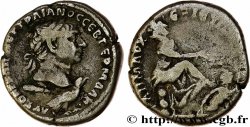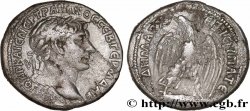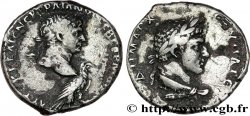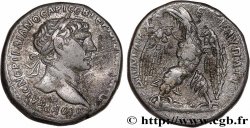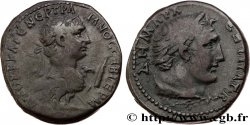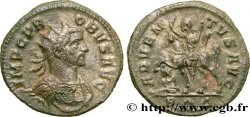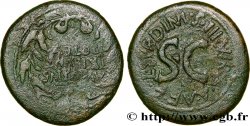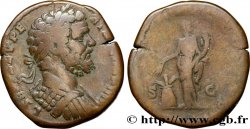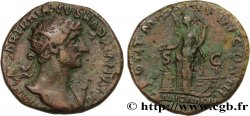E-auction 278-199131 - brm_464129 - TRAJANUS Denier
You must signin and be an approved bidder to bid, LOGIN TO BID. Accounts are subject to approval and the approval process takes place within 48 hours. Do not wait until the day a sale closes to register. Clicking on « bid » constitutes acceptance of the terms of use of cgb.fr private e-auctions.
Bids must be placed in whole Euro amounts only. The sale will start closing at the time stated on the item description; any bids received at the site after the closing time will not be executed. Transmission times may vary and bids could be rejected if you wait until the last second. For further information ckeck the E-auctions F.A.Q.
NO BUYER'S FEE.
NO BUYER'S FEE.
| Estimate : | 100 € |
| Price : | 40 € |
| Maximum bid : | 40 € |
| End of the sale : | 13 August 2018 14:25:00 |
| bidders : | 10 bidders |
Type : Denier
Date: 113
Mint name / Town : Roma
Metal : silver
Millesimal fineness : 900 ‰
Diameter : 18,5 mm
Orientation dies : 6 h.
Weight : 3,19 g.
Rarity : R1
Officine: 2e
Coments on the condition:
Exemplaire sur un flan bien centré à l’usure importante, lisible et identifiable. Patine de collection ancienne avec des reflets dorés
Catalogue references :
Obverse
Obverse legend : IMP TRAIANO AVG GER DAC P M TR P COS VI P P.
Obverse description : Buste lauré de Trajan à droite, drapé sur l'épaule gauche (O*2).
Obverse translation : "Imperatori Traiano Augusto Germanico Dacico Pontifico Maximo Tribuniciæ Potestate Consule sexto Patri Patriæ", (À l'empereur Trajan Auguste germanique dacique grand pontife revêtu de la puissance tribunitienne consul pour la sixième fois père de la patrie).
Reverse
Reverse legend : S P Q R OPTIMO PRINCIPI// ARAB ADQ.
Reverse description : Arabia (l’Arabie) drapée debout de face, tenant une branche de la main droite et une canne de la main gauche ; un dromadaire à ses pieds à gauche.
Reverse translation : "Senatus Populusque Romanus Optimo Principi// Arabia Adquisita", (le Sénat du peuple Romain, au meilleur des Princes// L’Arabie acquise).
Commentary
La représentation des camélidés est relativement rare dans le monnayage impérial. Un dromadaire ornait déjà le monnayage de Marcus Aemilius Scaurus et Publius Plautius en 58 avant J.-C. avec le roi nabatéen Aretas III qui se soumit à l’autorité romaine (RCV. 378). Sur notre exemplaire, c’est la personnification de la Province qui est figurée.








 Report a mistake
Report a mistake Print the page
Print the page Share my selection
Share my selection Ask a question
Ask a question Consign / sell
Consign / sell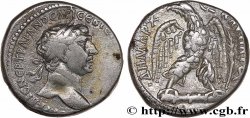
 Full data
Full data